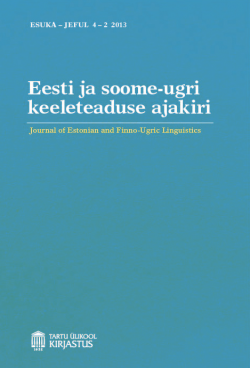Alignment in <i>lingua receptiva</i>: from automaticity towards monitored code-switching
DOI:
https://doi.org/10.12697/jeful.2013.4.2.03Keywords:
lingua receptiva, code-switching, Estonian-Russian communicationAbstract
Psycholinguistic alignment is a process in which interlocutors automatically adapt their lexical, structural and conceptual representations, enhancing both comprehension and production. Multilingual constellations also demonstrate alignment patterns, but rely on more monitoring than automatic alignment. This paper focuses on lingua receptiva – a multilingual communicative mode in which speakers use their own language and have enough proficiency to understand each other. Whenever L2 proficiency does not guarantee mutual understanding, compensatory strategies such as code-switching (CS) can be applied. In actual mono- and multilingual constellations, it is more common to use one language at a time, yet in this experiment the participants were invited to communicate in the mode of lingua receptiva. Nonetheless, CS occurred in the data and was analysed in the framework of language contact. Alternations and insertions were the main forms, and their distribution depended on L2 proficiency, attitudes and exposure. It is concluded that CS can function as an alignment strategy.


